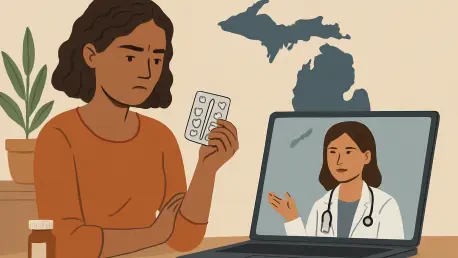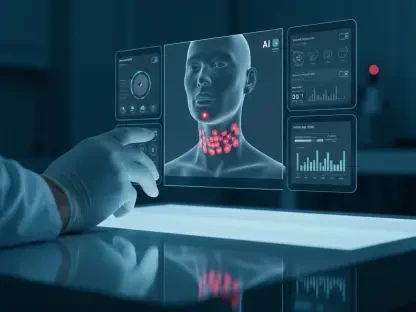In the heart of Michigan, where reproductive health care faces persistent challenges despite legal safeguards, a new player has emerged to address critical gaps in access to abortion services. Hey Jane, a telehealth provider based in New York, has recently extended its reach into the state, bringing virtual care to individuals who might otherwise struggle to obtain essential reproductive health services. This expansion comes at a time when many Michiganders are grappling with limited in-person options, making the innovative approach of telehealth a potential game-changer. By offering medication abortions, emergency contraception, and other sexual health care through a digital platform, Hey Jane is tackling barriers such as distance, cost, and privacy that have long hindered access. This development not only highlights the evolving landscape of health care delivery but also underscores the urgent need for solutions in a state where traditional clinic-based care is becoming increasingly scarce.
Telehealth as a Solution to Access Barriers
Bridging the Gap in Michigan
Hey Jane’s entry into Michigan represents a significant stride toward overcoming the systemic obstacles that have restricted reproductive health care access across the state. With 73 out of 83 counties lacking abortion providers and a shortage of OB-GYNs in one-third of the region, many residents face daunting challenges in securing timely care. Telehealth offers a scalable alternative, allowing patients to consult with providers remotely and receive necessary treatments without the burden of long-distance travel. Kiki Freedman, co-founder and CEO of Hey Jane, has emphasized the platform’s design to prioritize patient convenience, especially for those juggling work, childcare, or other responsibilities. This model reduces the stigma often associated with seeking reproductive care by providing a discreet, private avenue for services like medication abortions and emergency contraception, fundamentally altering how individuals in underserved areas engage with health care systems.
Beyond the logistical benefits, Hey Jane’s telehealth services address the emotional and social barriers that can deter individuals from seeking care. For many, the prospect of visiting a clinic in a small community where anonymity is hard to maintain can be intimidating. Virtual consultations eliminate the need for physical presence in such settings, offering a layer of confidentiality that is crucial for patient comfort. Additionally, the platform provides access to a range of services beyond abortion, including birth control and treatments for conditions like STIs and UTIs, creating a comprehensive care model. This holistic approach ensures that patients have a one-stop solution for multiple sexual health needs, reducing the fragmented experience often encountered in traditional systems. As telehealth continues to evolve, its ability to adapt to the unique challenges faced by Michigan residents positions it as a vital tool in the fight for equitable reproductive health access.
Expanding Reach for Out-of-State Patients
Hey Jane’s impact extends beyond Michigan’s borders, offering critical support to individuals from states with more restrictive abortion laws. By facilitating access for out-of-state patients who travel to Michigan, the platform provides a lifeline for those in desperate need of care. Logistical innovations, such as arranging prescription pickups at local post offices with just an ID, simplify the process for these individuals, ensuring they can obtain medication abortions without unnecessary delays. According to data from the Guttmacher Institute, over 1,600 out-of-state individuals sought abortions in Michigan in the past year, highlighting the growing trend of interstate travel for reproductive care. Hey Jane’s role in streamlining this process underscores the broader national crisis of access and the importance of flexible, patient-centered solutions in addressing it.
The significance of supporting out-of-state patients cannot be overstated, as it reflects a deeper systemic issue where legal barriers in some regions force individuals to seek care elsewhere. Hey Jane’s model not only accommodates these travelers but also alleviates some of the stress associated with navigating unfamiliar health care systems. By offering virtual consultations that can be conducted from anywhere, the platform ensures that patients can begin the process before even arriving in Michigan, minimizing disruption to their lives. This approach also highlights the potential for telehealth to serve as a bridge between states with differing policies, creating a network of care that transcends geographical and legal boundaries. While challenges remain, such as ensuring follow-up care for those who return to restrictive states, Hey Jane’s efforts mark a progressive step toward addressing the complex dynamics of abortion access on a national scale.
Challenges Beyond Telehealth
Federal Funding Battles and Clinic Sustainability
The landscape of reproductive health care in Michigan is heavily influenced by federal policies that threaten the stability of traditional providers. A notable example is the “One Big Beautiful Bill Act,” which enacted a one-year ban on Medicaid payments to large nonprofit health centers providing abortions, directly impacting organizations like Planned Parenthood. This policy has sparked significant financial strain, contributing to clinic closures across the state, with Planned Parenthood reducing its centers from 13 to 10 in recent years. Legal challenges led by state officials and affiliates have resulted in temporary judicial interventions to restore funding, but the ongoing appeals and national debate over abortion financing continue to create uncertainty. These funding battles highlight a critical barrier to sustaining in-person care, even as telehealth options like Hey Jane emerge to fill some gaps.
The ripple effects of federal funding disputes extend far beyond immediate clinic operations, affecting the broader ecosystem of reproductive health services. Low-income patients, who often rely on Medicaid for non-abortion care such as cancer screenings and STI testing, are disproportionately impacted by these restrictions. The potential closure of additional health centers nationwide looms as a stark reminder of the fragility of the current system. In Michigan, where access is already limited, the loss of even a single clinic can leave entire communities without viable options for in-person care. While telehealth offers a partial solution, it cannot fully compensate for the comprehensive services provided by physical centers, making the resolution of these funding conflicts a pivotal issue. The tension between political ideologies and practical health care needs remains a formidable challenge in ensuring equitable access for all.
The Persistent Need for In-Person Care
Despite the advancements brought by telehealth, the necessity of in-person care for certain reproductive health needs remains undeniable. Medication abortions, which combine mifepristone and misoprostol, are only effective up to the 11th week of pregnancy, beyond which surgical procedures requiring physical clinic visits become essential. This limitation underscores that virtual platforms, while innovative, cannot fully replace the role of traditional health centers in providing comprehensive care. In Michigan, where vast areas lack abortion providers, the absence of nearby clinics for later-term procedures creates a significant gap that telehealth alone cannot bridge. This reality emphasizes the need for a balanced approach that integrates both digital and physical care options to meet diverse patient needs.
Moreover, in-person clinics offer critical support services that extend beyond medical procedures, including counseling and follow-up care, which are often more effective face-to-face. For complex cases or complications arising from medication abortions, immediate access to a physical facility can be life-saving. The closure of key centers, such as the only Planned Parenthood location in Michigan’s Upper Peninsula, has left many residents with few alternatives, exacerbating disparities in access. While Hey Jane’s model addresses early-term needs and enhances privacy, the broader challenge lies in ensuring that physical infrastructure remains robust enough to support all aspects of reproductive health. Advocates argue for increased investment in both telehealth and brick-and-mortar facilities to create a hybrid system that leaves no patient behind, reflecting the multifaceted nature of this ongoing health care crisis.
Reflecting on Broader Implications
Looking back, Hey Jane’s expansion into Michigan stood as a beacon of innovation in a landscape marked by persistent reproductive health care challenges. The platform’s virtual services provided a vital lifeline, addressing barriers of distance, cost, and stigma for countless individuals. Yet, the struggles of in-person providers, compounded by federal funding disputes and clinic closures, painted a sobering picture of the limitations faced. As telehealth carved out a space for early-term care and interstate support, the indispensable role of physical clinics for comprehensive needs remained clear. Moving forward, stakeholders were encouraged to advocate for a dual approach, blending digital advancements with sustained investment in traditional health centers. Collaborative efforts to resolve policy conflicts and bolster funding could pave the way for a more inclusive system, ensuring that every Michigander, regardless of location or circumstance, had access to the full spectrum of reproductive care.









